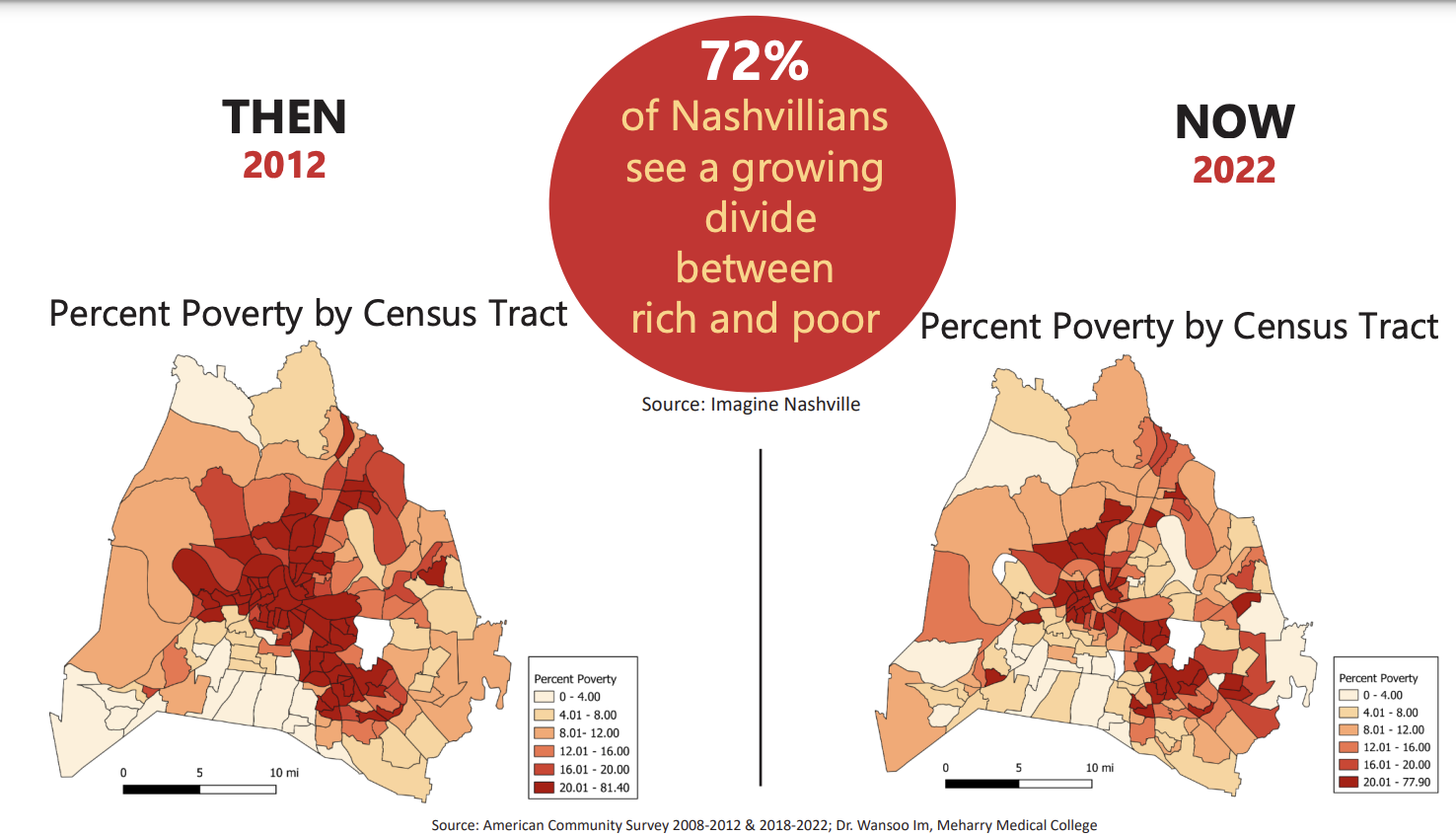
As Nashville has grown over the last quarter century — adding massive numbers of residents and jobs — there has also been an increase of people living in poverty, according to a Metro Social Services study published this week.
This year marks the 15th annual “Community Needs Evaluation” from the department. Previous years have found that Nashvillians were facing “the big squeeze”: a rapidly escalating cost of living, supported by stagnant or slowly increasing wages.
Now, in this year’s report, the agency is identifying the root of that “squeeze” as growth.
“Gross domestic product has been heading to a new level year after year. But, as we will demonstrate, the standard of living of many people in Nashville — including 200,000 workers — is not heading up,” says Abdelghani Barre, the Director of Strategic Planning and Research at Metro Social Services. “Therefore, the myth that if you just focus on growth, everything will go well — that’s not true … growth alone does not reduce disparities.”
Barre says GDP growth doesn’t capture the income disparities that exist across a population.
The report identifies a range of statistics — including that 10% of Nashvillians are food insecure, about as many lack health insurance, and 50% of Nashville workers earn below a living wage.

Dr. Garrett Harper, a researcher with the department, says the reason more people are in economic distress is not only a result of income. Rather, it is also on account of steep increases in Nashville’s cost of living.
That rising cost has also pushed some residents out, resulting in economically distressed residents all across Davidson County, as opposed to concentrated areas with high rates of poverty. 
“Due to growth and influx of population — and the exit of some of the poorer population — growth has diluted, dispersed and redistributed poverty in Nashville. There are now new areas of dense poverty in areas where there was none a decade ago,” Harper says. “In other words, poverty is not being overcome but is being diluted throughout the city due to changes brought on by gentrification and growth.”
These findings will be used to inform Metro’s policies and programs.
Prior Community Needs Evaluations can be found online via Metro Social Services.

